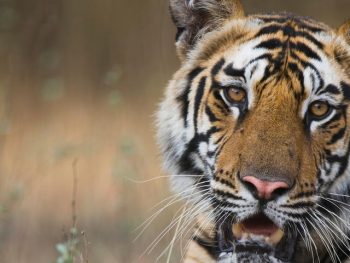Guest writer for Wake Up World
“Animals share with us the privilege of having a soul.” – Pythagoras
It was bizarre and unexplainable: I kept having recurring dreams for about a month, where I would walk into an eerie, foreboding forest at night with a leopard peering at me through the shrubs. Its stare seemed kind, almost motherly, but very intense … somehow I knew that it was trying to tell me something about the depths of the forest ahead.
It was only recently that I discovered the existence of Spirit Animals, and that mine was the Leopard. It is said that we, as human beings, possess at least one Spirit Animal, or totem, in our lifetimes that serve as our personal protectors, guides, helpers and companions. But usually, it is common for us to have many Spirit Animal helpers throughout different periods of our lives.
In this article, I will explore the mysterious origins of the Spirit Animal.
Primitive Origins
The concept of ‘Spirit Animals’ draws its origins from ancient Animistic and Totemistic beliefs about the world and our connection to it.
Totemism, a system of belief practised by the Native American Indian people, and the Australian Aboriginal people for example, incorporates the notion that each human being has a spiritual connection to another physical being (e.g. a plant or animal).
The Kpelle people of Liberia for instance, possess animal, plant and natural phenomena (wind, rain etc.) totems that are thought to guide and protect their people. Their totems are also thought to be a form of alter ego, or second self.
Animism, on the other hand, is more in line with the world view held by many Buddhist, Shinto, Pagan and Neopagan groups of people, that all plants, animals and objects have spirits.
However, not everyone is convinced of the validity of Animism. 19th century anthropologist Sir Edward Tylor for instance, was not only one of the greatest skeptics of Animism, but was also responsible for forming the currently accepted definition of ‘Animism’. Tylor believed that Animistic beliefs were characteristic of “primitive” and “childish” peoples, who typically possess “cognitive underdevelopment”, thus discrediting the whole Animistic world view in one fell swoop.
However, it’s not necessarily intelligent to subscribe to Tylor’s opinion. When we look at Animistic belief, we see that it treats all humans, animals and plants as being equal and interdependent of each other. In other words: to the Animist it is morally imperative to treat all forms of life with respect. Not only that, but to the Animist we we are part of nature, rather than being superior to nature, or separate from nature.
This belief is on the opposite end of the spectrum of the modern day “refined”and “cognitively developed” man who believes that he is the master of the world, and everything is subject to his rule. No wonder the earth’s forests, streams, oceans, park-lands and wildlife are polluted, pillaged and dying every day. “Mature” developed man has such a sickly and unintelligent mindset towards nature that he creates nothing but destruction and death wherever he treads.
So, who truly has the primitive mindset here?
Those who believe in the presence of Spirit Animals not only respect the flora and fauna of the earth as equals, but they often perceive the world around them as consisting of one and the same universal energy. This is similar to pantheistic thought which believes that man, nature and animalkind are all the manifestations of God.
Not all new age kooks vouch for the validity of Spirit Animals either. Philosopher Baruch Spinoza concluded similar thoughts about the world:
The mind of God is all the mentality that is scattered over space and time, the diffused consciousness that animates the world.
Even famous physicist Albert Einstein was considered to be a pantheist after writing one letter to a friend in 1954:
We followers of Spinoza see our God in the wonderful order and lawfulness of all that exists in its soul as it reveals itself in man and animal.
So, does this further add to the validity of Spirit Animals existing in our lives? In the end, it’s up to you to decide whether Spirit Animals are merely primitive social constructs, or whether their long history throughout many peoples and cultures points to a higher, deeper truth.
Read our article on Spirit Animals.
Note: The phrase “Power Animal” refers to the shamanic idea that certain animals (or tutelary spirits) can physically and psychologically empower us. The Power Animal, just like the Spirit Animal, is thought to lend its wisdom, attributes, and instincts to us in times of need.
Recommended articles by Aletheia Luna:
- Sound Healing Therapy: 14 Mystical Instruments That Induce Profound Relaxation and Inner Quiet
- 9 Types of Muscle Tension Caused by Trapped Emotions
- Being Spiritual Doesn’t Mean Sh*t If You Can’t Hold Space for Others
- 9 Ways to Awaken the Divine Masculine Within You
- 12 Signs It’s Time to Move On and Burn All Bridges
- How to Re-Parent Your Wounded Inner Child
- How to Perform Self-Hypnosis for Health and Happiness
- How to Channel Your Soul Through Automatic Writing
- 42 Powerful Ways of Letting Go of Anger and Heartbreak
- 6 Types of Energy Vampires That Emotionally Exhaust You
About the author:
Aletheia Luna is an influential spiritual writer whose work has changed the lives of thousands of people worldwide. After escaping the religious sect she was raised in, Luna experienced a profound existential crisis that led to her spiritual awakening. As a psychospiritual counselor, tarot reader, and professional writer, Luna’s mission is to help others become conscious of their entrapment and find joy, empowerment, and liberation in any circumstance. See more of her work at lonerwolf.com.
This article The Origins of the Spirit Animal, Totem and Power Animal was originally published on lonerwolf.com, reproduced with permission.

If you've found value in our articles, we invite you to support the release of our brand-new book, "Gratitude Practices for Kids: A Practical Guide for Adults to Instill a Spirit of Appreciation and Positivity in the Next Generation."
"Gratitude Practices for Kids" brings together over 25 innovative and accessible practices designed to enhance gratitude in everyday life. This comprehensive guide is backed by 17 scientific studies, ensuring each concept is grounded in research, underscoring our commitment to nurturing growth, emotional intelligence, and positive interactions between adults and children.
We encourage you to opt for the paperback version to celebrate this new release. Dive into its fresh pages away from digital distractions, allowing you to immerse yourself in the transformative practices it offers.
Over recent years, Wake Up World has faced significant online censorship, which has impacted our financial ability to operate. Moving into book publishing represents a strategic step to secure the ongoing funds needed to continue our mission. By purchasing Gratitude for Kids, you help us keep our content free and accessible to everyone, avoiding needing a paywall. With over 8,500 articles published in the last 13 years, we remain dedicated to keeping our valuable content open to all.









